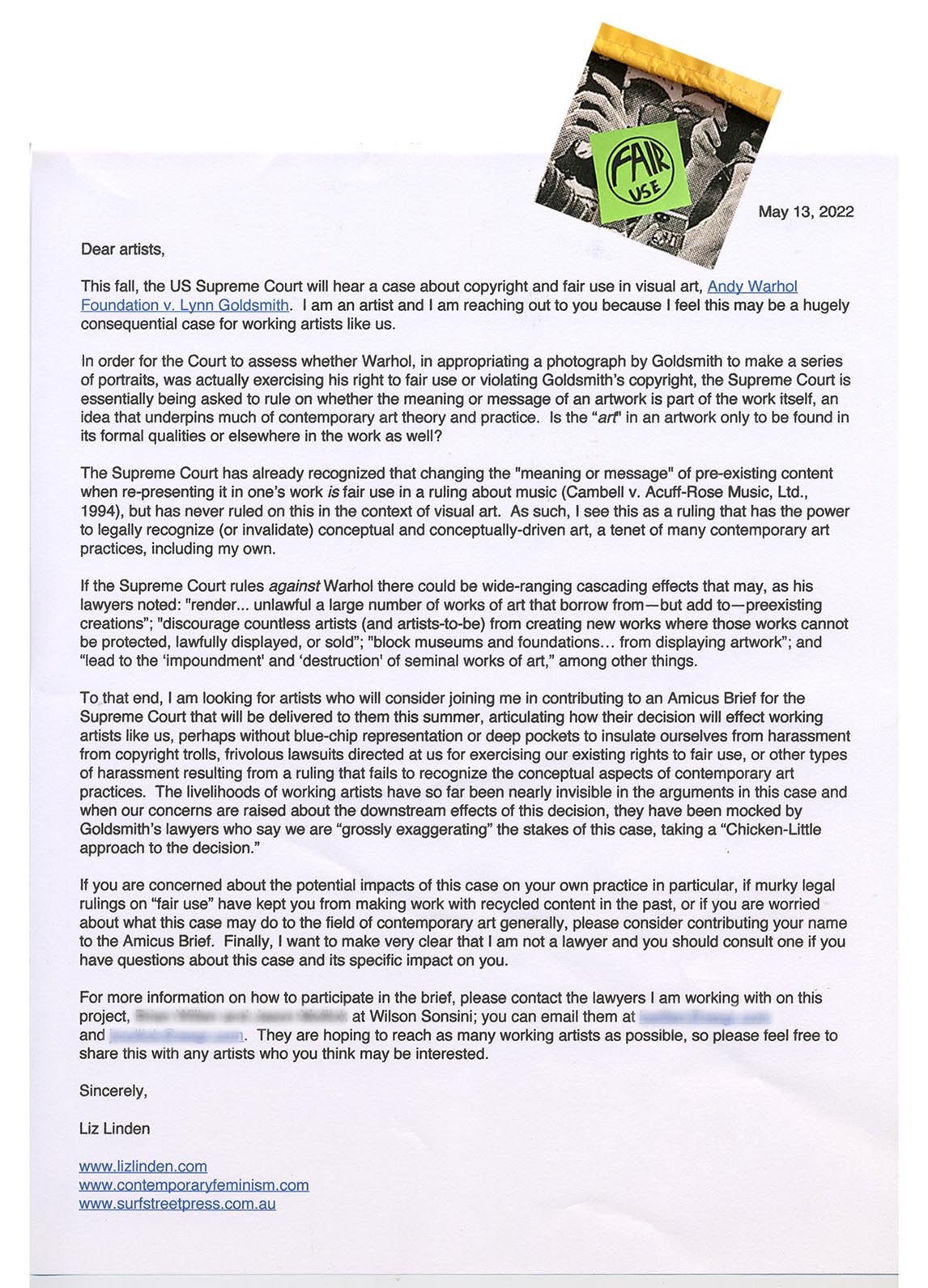
Dear Artists,
This fall, the US Supreme Court will hear a case about copyright and fair use in visual art, Andy Warhol Foundation v. Lynn Goldsmith. I am an artist and I am reaching out to you because I feel this may be a hugely consequential case for working artists like us.
In order for the Court to assess whether Warhol, in appropriating a photograph by Goldsmith to make a series of portraits, was actually exercising his right to fair use or violating Goldsmith’s copyright, the Supreme Court is essentially being asked to rule on whether the meaning or message of an artwork is part of the work itself, an idea that underpins much of contemporary art theory and practice. Is the “art" in an artwork only to be found in its formal qualities or elsewhere in the work as well?
The Supreme Court has already recognized that changing the "meaning or message" of pre-existing content when re-presenting it in one’s work is fair use in a ruling about music (Cambell v. Acuff-Rose Music, Ltd., 1994), but has never ruled on this in the context of visual art. As such, I see this as a ruling that has the power to legally recognize (or invalidate) conceptual and conceptually-driven art, a tenet of many contemporary art practices, including my own.
If the Supreme Court rules against Warhol there could be wide-ranging cascading effects that may, as his lawyers noted: "render... unlawful a large number of works of art that borrow from—but add to—preexisting creations”; "discourage countless artists (and artists-to-be) from creating new works where those works cannot be protected, lawfully displayed, or sold”; "block museums and foundations… from displaying artwork”; and “lead to the ‘impoundment' and ‘destruction' of seminal works of art,” among other things.
To that end, I am looking for artists who will consider joining me in contributing to an Amicus Brief for the Supreme Court that will be delivered to them this summer, articulating how their decision will effect working artists like us, perhaps without blue-chip representation or deep pockets to insulate ourselves from harassment from copyright trolls, frivolous lawsuits directed at us for exercising our existing rights to fair use, or other types of harassment resulting from a ruling that fails to recognize the conceptual aspects of contemporary art practices. The livelihoods of working artists have so far been nearly invisible in the arguments in this case and when our concerns are raised about the downstream effects of this decision, they have been mocked by Goldsmith’s lawyers who say we are “grossly exaggerating” the stakes of this case, taking a “Chicken-Little approach to the decision.”
If you are concerned about the potential impacts of this case on your own practice in particular, if murky legal rulings on “fair use” have kept you from making work with recycled content in the past, or if you are worried about what this case may do to the field of contemporary art generally, please consider contributing your name to the Amicus Brief. Finally, I want to make very clear that I am not a lawyer and you should consult one if you have questions about this case and its specific impact on you.
For more information on how to participate in the brief, please contact the lawyers I am working with on this project, XXXX and XXXX at Wilson Sonsini; you can email them at XXXX and XXXX. They are hoping to reach as many working artists as possible, so please feel free to share this with any artists who you think may be interested.
Sincerely,
Liz Linden
www.lizlinden.com
www.contemporaryfeminism.com
www.surfstreetpress.com.au